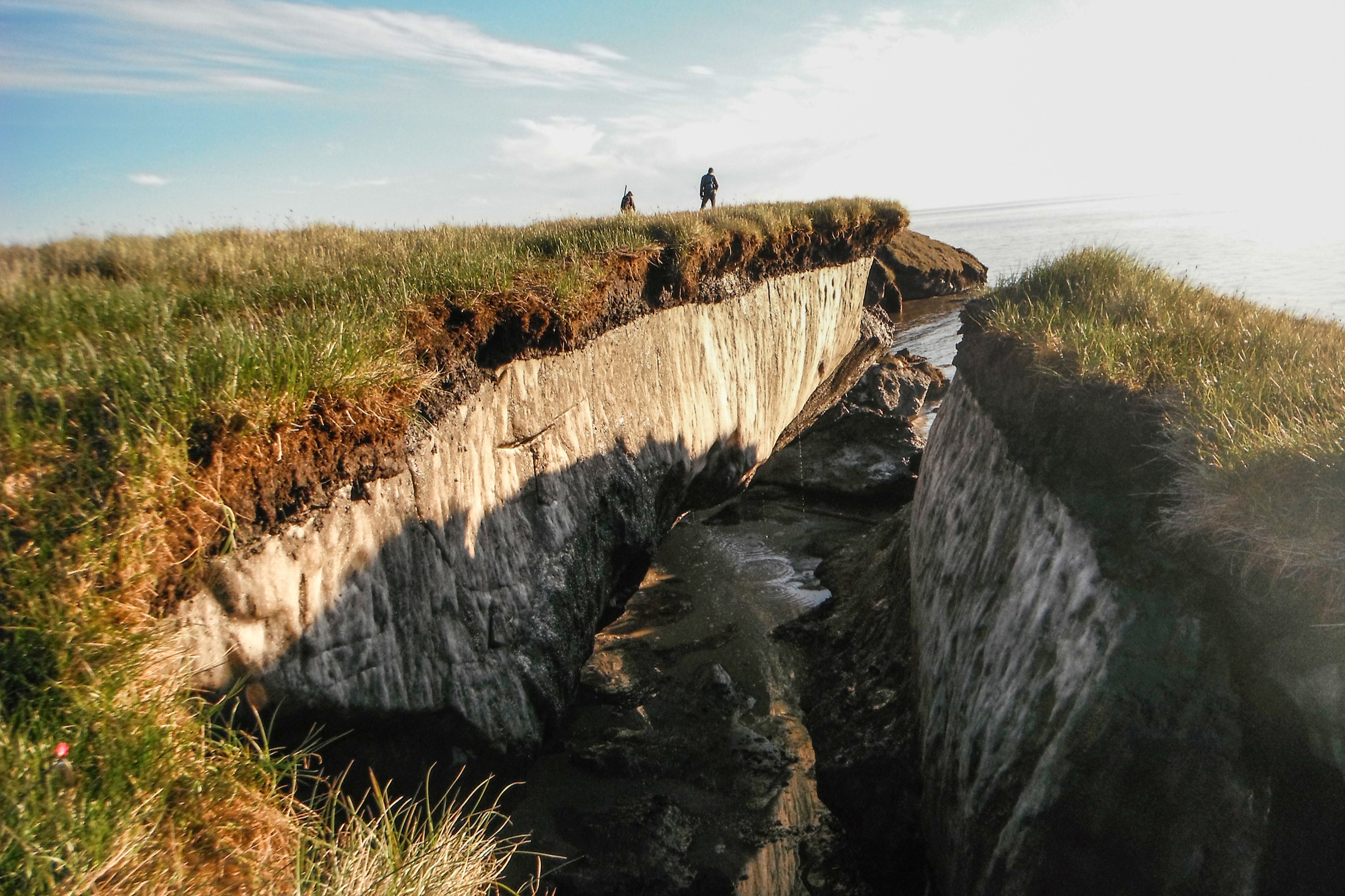
Ian Graham and John Jensen
The version of record of this op-ed appeared in the National Observer.
We’ve made halting progress on cutting greenhouse gas emissions. Despite setbacks, countries are switching to electric vehicles and expanding renewable electricity. But even if we succeed in slashing human-made emissions, the climate math we’re working with is incomplete. A huge missing piece comes from the Arctic: potential emissions from thawing permafrost aren’t even counted in most global climate models or in the carbon budgets underpinning Paris Agreement commitments.
This permafrost thaw presents more than a rounding issue — it’s a potential carbon time bomb. As frozen soil begins to release vast stores of carbon dioxide and methane, it risks unleashing a self-reinforcing feedback loop: warming causes thaw, thaw causes emissions and emissions drive still more warming. Left unaddressed, these feedbacks could overwhelm even our most ambitious efforts to cut human-made emissions.
You might expect that governments and research institutions are already working full tilt on this problem — and they should be. A new Cascade Institute report reviews the current state of such work, and identifies 13 potential interventions that could slow or stop permafrost thaw and curb resulting emissions. Most are still in early stages of research and development, but together they represent a critical frontier for innovation. With focused investment and international cooperation, at least some of these interventions could transform from tentative experiments into the tools we need to defuse the permafrost carbon time bomb.
Permafrost, found mainly in the Arctic North, is permanently frozen soil laid down over the past million or so years, during periods when the planet was much colder than today. It’s also one of nature’s great storehouses of carbon. The scale of that storehouse is hard to fathom: over one and a half trillion metric tonnes of carbon locked in the ice, more than twice the amount of carbon currently in the atmosphere. And Canada is home to more of that permafrost than any country but Russia.
Because of recent warming, this reservoir is starting to thaw. And when the frozen organic material is released, it begins to decay, releasing its planet-heating gasses.
Emissions from permafrost thaw are currently small compared with those from direct human activities. These emissions are expected to accelerate significantly as thaw becomes more severe, although much uncertainty remains around the trajectory and timing of this increase.
The best case? The impact of thaw will make it harder to achieve our net-zero goals and a stabilized average global temperature and might somewhat raise the temperature at which we stabilize the climate.
The worst case is calamity: rapid and accelerating thaw triggering a vicious cascade of rising concentrations of planet-heating carbon, with permafrost thaw driving further heating, which in turn drives further thaw.
We don’t yet know which case is most likely, or where between the two we might end up. But we know enough to start searching for solutions. Of the 13 interventions we reviewed, only three — wildfire management, caribou herding, and conservation or restoration of peatlands and wetlands — are already commonly practiced, though not yet in ways designed to specifically prevent or slow permafrost thaw.
Work on the other 10 is either very preliminary (e.g., engineering bacteria to reduce methane emissions) or extremely controversial (e.g., injecting aerosols into the stratosphere to reflect some of the incoming solar radiation).
Moreover, all these interventions will require years of research and development to move from ideas to tools we understand and could use effectively. And all will need an operating and governance model for developing and eventually deploying these strategies, led by Indigenous Peoples and other Northern stakeholders.
But today there are no plans to create such an operating and governance model, and no plan to conduct the needed R&D.
In the current environment, neither Russia nor the United States is likely to act on this threat. It’s thus up to Canada to lead, in cooperation with other permafrost nations — the Nordic countries, China, Greenland and Mongolia.
The situation is urgent. Permafrost is already thawing and that thaw is accelerating, pushing us closer to a potential point of no return. We need to understand the challenge and start dealing with it, before it’s too late.
Ian Graham is an affiliated researcher at the Cascade Institute and the author of the report Protecting Permafrost: Addressing the climate threat of Arctic thaw.
John Jensen is a sustainable-energy-focused entrepreneur, a former director of the Yukon Energy Board, and a member of the Gaanaxtedi Clan of the Carcross Tagish First Nation.
